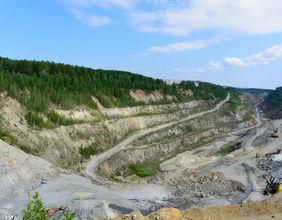In today’s fragmented global trade landscape, South America is emerging as a savvy player, striking a delicate balance between major economic powers like the United States, China, and the European Union. Thanks to its neutral stance, the region is not just weathering geopolitical tensions — it’s thriving, according to DP World’s 2025 Trade in Transition report. The annual report, co-authored with Economist Impact, examines the headwinds of global trade in 2025 and their impact around the world.
The regional South American report, “South America: Positioning for Global Connectivity” finds that by expanding trade agreements and attracting foreign direct investment (FDI), South America is positioning itself as a vital connector in the global supply chain. However, its path forward is not without challenges.
Neutrality: An Advantage in a Divided World
As the world’s largest economies engage in trade wars and protectionist policies, South America is charting a different course. According to the survey, 64% of South American executives view global trade fragmentation as a positive opportunity for the region’s exports.
This optimism reflects the region’s ability to maintain strong relationships with all three major blocs — the United States, China, and the EU — without overly aligning with any one of them.
Geopolitical tensions have created opportunities for South America to capitalize on disruptions. For instance, Brazil’s dominance in soybean exports to China, following Chinese tariffs on U.S. soybeans, underscores the region’s ability to turn trade disruptions into advantages.
Neutrality is also seen as a driver for attracting FDI, with 32% of executives pointing to this balanced approach as a way to expand manufacturing capabilities. By diversifying economic relationships, South America is building resilience against the uncertainties of relying too heavily on any single trade partner.
Trade Agreements: Building Stability Amid Uncertainty
Trade agreements are central to South America’s strategy to remain competitive in an unpredictable global market. The recently concluded EU-Mercosur trade negotiations mark a key milestone, reducing barriers and enhancing market access between South America and Europe.
Countries like Chile and Peru are leveraging free trade agreements (FTAs) with the United States and China to diversify their export markets and provide the stability businesses need in a world edging toward protectionism.
However, the region isn’t immune to the ripple effects of U.S. trade policy. Some South American businesses are adapting supply chains to mitigate potential tariffs, such as those targeting goods routed through the region from Chinese ports. This reflects the need for agility as global trade dynamics shift.
China’s Influence: A Double-Edged Sword
China’s economic footprint in South America has grown significantly, with bilateral trade increasing from $18 billion in 2002 to over $500 billion in 2024. Chinese investments in infrastructure and trade agreements have helped South America diversify its economic ties, but they also come with risks.
While deepening ties with China has strengthened trade networks, concerns remain about over-reliance on commodity exports and potential sovereignty issues. Additionally, North America’s protectionist policies could pressure South America to limit partnerships with Chinese firms. Balancing these competing relationships will be critical for long-term stability and resilience.
Infrastructure Challenges: A Roadblock to Growth
South America’s trade ambitions are constrained by its underdeveloped infrastructure. Logistical challenges such as unpaved roads, port inefficiencies, and unreliable electricity create barriers to building cost-effective, interconnected supply chains.
Addressing these issues will require significant investments, including public-private partnerships and international funding. However, infrastructure projects — especially those financed by China — often come with dual-use capabilities that could complicate global relationships.
Despite these obstacles, some countries are finding innovative ways to attract investment. Chile, for example, is positioning itself as a global leader in clean hydrogen production, leveraging its renewable energy resources to promote sustainable growth. Such initiatives highlight the potential for South America to align growth strategies with global sustainability goals.
Nearshoring: A Strategic Shift
Nearshoring is gaining traction among South American businesses as they seek to reduce logistics costs and improve supply chain resilience. According to the survey, 41% of executives cite reducing transport and logistics costs as their primary motivation for nearshoring, compared to a global average of 33%.
Countries like Argentina, under its recent free-market reforms, are striving to attract foreign investment by encouraging private enterprise and increasing competition. Similarly, other nations in the region are investing in infrastructure and reforms to establish themselves as hubs for transport and distribution.
However, these efforts depend on reliable tax incentives and clear legal frameworks. Without a stable regulatory environment, the region risks deterring the very investors it seeks to attract.
Digital Transformation: The Tech Advantage
South American firms are increasingly turning to technology to address trade challenges. Artificial intelligence (AI) is playing a growing role in reducing trade costs, improving planning, and optimizing cash management. Digital tools for inventory management and supply chain visibility are helping businesses mitigate logistical challenges tied to poor infrastructure.
While AI adoption varies across industries, its potential to enhance efficiency is undeniable. By streamlining operations and cutting costs, digital transformation is helping South America position itself as a competitive global trade partner despite its infrastructure gaps.
The Path Forward
South America stands at a crossroads, with opportunities and challenges in equal measure. By maintaining neutrality, leveraging trade agreements, and investing in infrastructure and technology, the region is navigating the complexities of modern trade with remarkable adaptability.
However, success will depend on South America’s ability to balance relationships with major powers while addressing internal challenges such as infrastructure development and regulatory stability. With the right strategies, the region can solidify its position as a vital player in the global economy.
Curious to learn more about South America’s trade dynamics? Click here to download a copy of the full report, where you can dive deeper into the findings shaping the region’s future.






